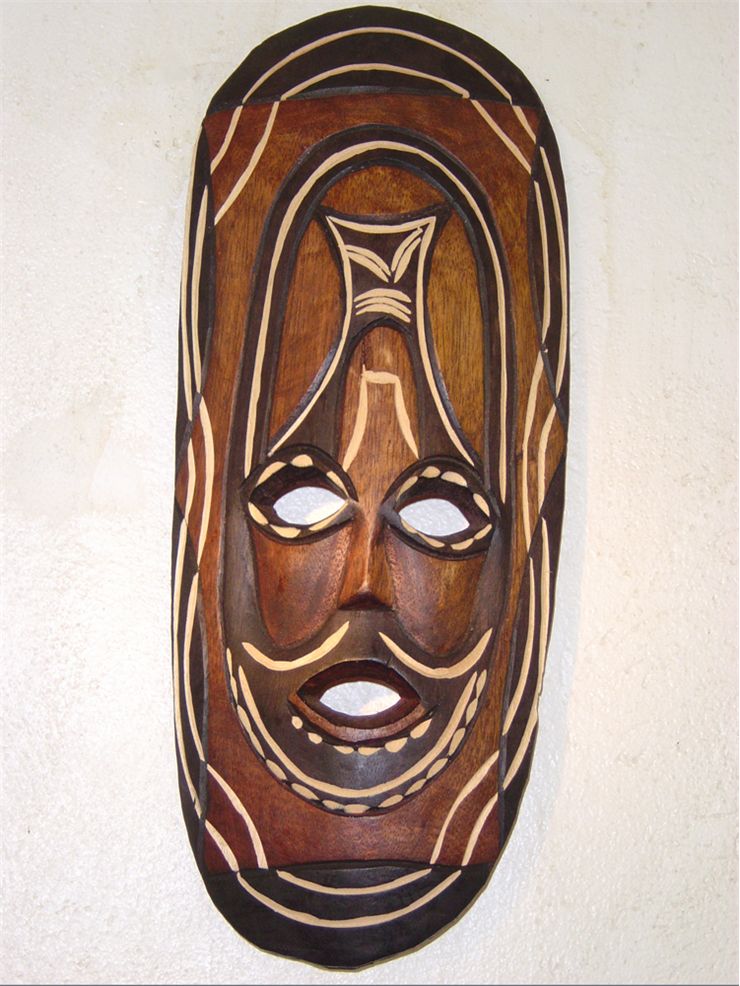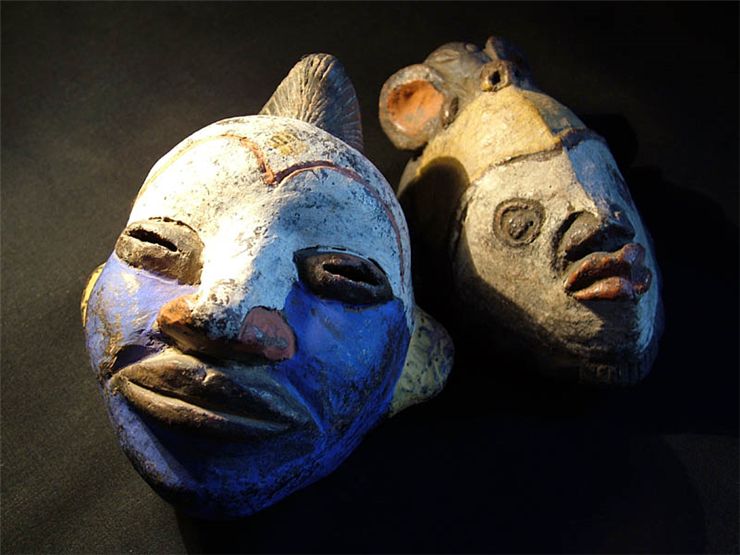History of Traditional African Masks
One of the main characteristics of culture of African peoples is use of masks in rituals and ceremonies. It is believed that the earliest masks were used in Africa before Paleolithic era. They represent spirits of animals or ancestors, mythological heroes, moral values or a form of honoring of a person in a symbolic way. They are made from wood, pottery, textiles, copper and bronze. Details could be made from animal teeth, hair, bones and horns as well as feathers, seashells and even straw and egg shells. Maker of the masks has a high rank in the village because it is believed that he has a contact with a spirit world and making masks is a craft passed down in the family.
African masks are most commonly shaped like a human face or a muzzle of some animal. Masks are highly stylized because African cultures distinguish between outer look of something and its essence. These masks are made to represent an abstract subject, which explains stylization. Animals are frequent theme of African art of mask making. They represent the spirit of an animal and one that bears the mask, becomes that animal himself which allows for communication with that animal, for instance to ask animal to keep away from the village. In other cases animal is a symbol of virtue. The most common animals that are represented with masks are buffalo, hyena, hawk, crocodile and antelope. Antelope is one of the most widely used animal masks. It symbolizes agriculture and is worn to enable better crops. Horns represent growth of millet, legs roots of the plants while ears represent songs that women sing in the harvest time. Mask are sometimes made with details from different animals and then they represent some virtue. For instance, to represent the power, masks are made to have antelope horns, crocodile teeth and fangs of a warthog. Mask representing values can also be of human shape. Mask representing calmness and patience has half-closed eyes, one having small mouth and eyes represents humility while mask that represents wisdom has a wide bulging forehead. Mask with a large chin represents power and strength.

One more theme for African masks is female face made by ideal of feminine beauty. While masks of some tribes have breasts and ornamental scars some other have almond shaped eyes, curved eyelashes, thin chin and ornaments. All this is considered as attributes of beauty in females for their respective tribes. Wearing of these female masks is reserved for men in most cases.
Masks that represent ancestors are most commonly shaped as a human skull. They are used in various ceremonies as witnesses, dead ancestral protectors from which approval is asked or as subjects to whom respects are paid.
Mask is worn by a dancer that then becomes “bearer” of the spirit of the mask, a sort of a medium between the tribe and a spirit. This trance-like state is accomplished with a specific music and a dance. Ceremonies as weddings, initiation rites and funerals have a masked dance.



